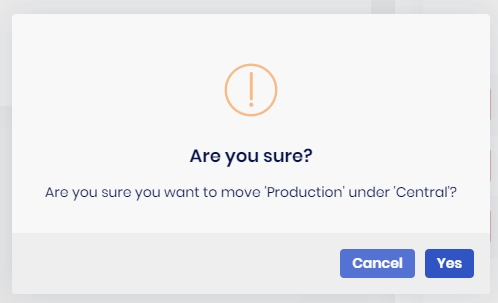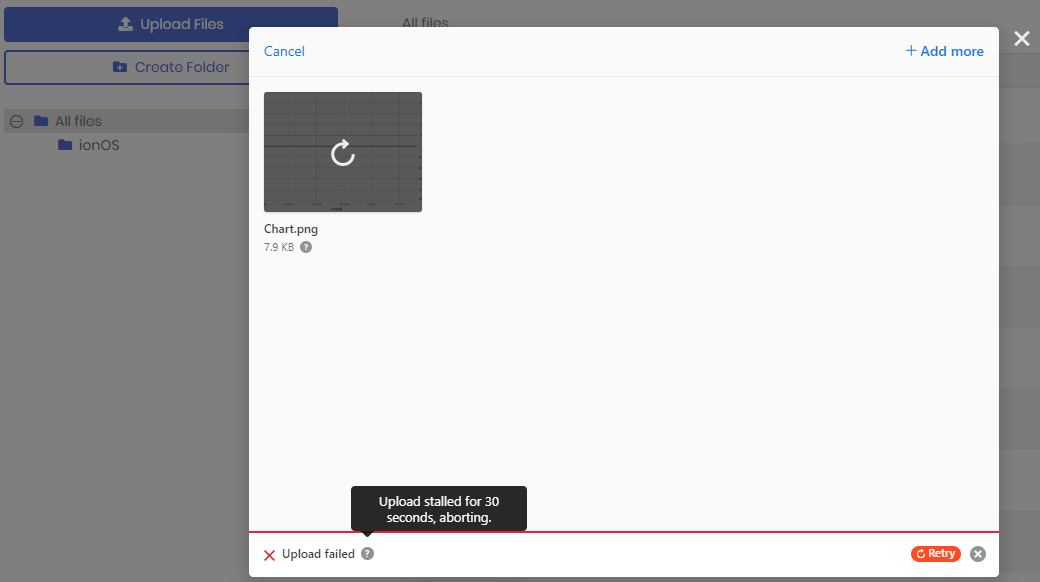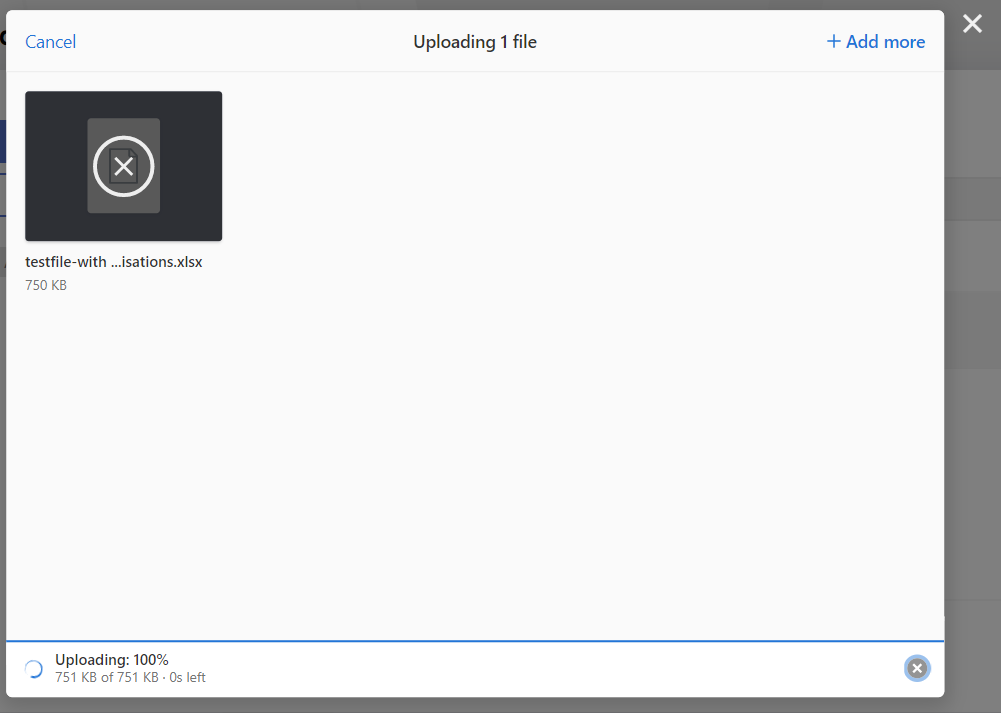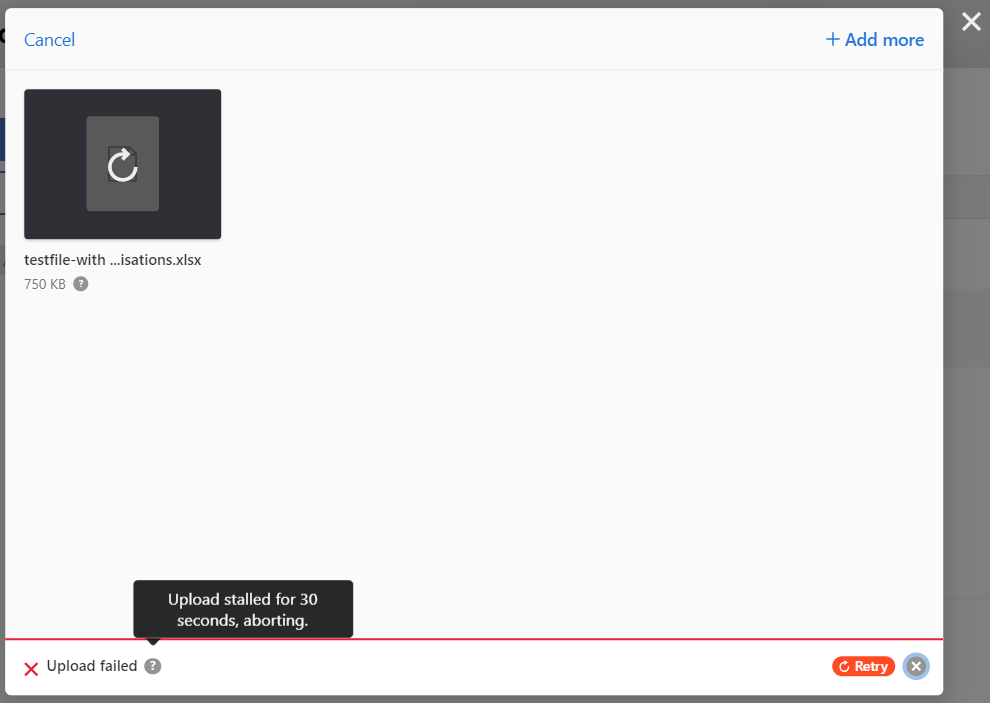Activities of "michael.sudnik"
Is there an existing module or straight forward way to allow all of the built in email settings to be editable in the settings adminstration UI? Or do we need to build this ourselves? I was surprised that it isnt included in the default created application. Thanks.
- ABP Framework version: 3.3.1
- UI type: MVC
- Tiered (MVC) or Identity Server Seperated (Angular): yes
- Exception message and stack trace:
- Steps to reproduce the issue:
After enabling the Microsoft external provider for my organisation, the first time click the Microsoft button on the login page and register my email address, I am then logged into the system correctly.
However, after logging out and trying to log back in again using the Microsoft button, it asks me to register my email address again - which it should not be doing. Obviously, I am unable to register again as both my username and email address are already in the system (and clicking the "Already registered? Login" just takes me to the start again).
I think that the problem might be that my username for my organisation is actually different to my email address. Email format: joe.blogs@myorganisation.com Microsoft username format: jblogs@myorganisation.com
What I can see is that after registration, the system is incorrectly recording my username to actually be my email address (e.g. joe.blogs@myorganisation.com when it should probably be jblogs@myorganisation.com), which might be causing the problem.
Are you able to point me in the right direction to try and debug this problem? Are there any hooks in the code that would allow me to try and investigate this?
- ABP Framework version: v3.3.1
- UI type: MVC
- Tiered (MVC) or Identity Server Seperated (Angular): MVC
- Exception message and stack trace:
- Steps to reproduce the issue:
Hi,
I have spent more than a day working through this problem and can reproduce the problem reliably using an unmodified solution created using the abp suite.
With the Microsoft external provider enabled, the Log In button will sometimes timeout (after 230 seconds, as defined by azure app services with no response). It normally happens the 3rd or 4th time after clicking log out and logging back in again. I have seen it freeze in both ways, when using a username and password or when using the now enabled microsoft login. It just times out after an arbitrary number of attempts.
- Create new solution using abp suite (application, MVC, no mobile, mongodb, not tiered, not preview)
- Publish it to a new azure app service
- Access the website through the ...azurewebsites.net url
- Enable the Microsoft external provider within the account settings UI
- Log out, Log in, Log out, log in, ... a few more times maybe... then timeout on loggin in
This only appears to be a problem with running within azure. I do not have the same problem when running locally.
I am using MongoDB Atlas, but do not see anything in the logs to indicate a problem with this communication. I event extended the MongoDB code to ensure that the Client was created with logging capabilities (it would be useful to have a way to create a MongoDB Client through a factory somewhere) and did not see any problems
I have enabled every log that I know how to, and do not see anything after the post request is started to be handled. This led me to add my own middleware to try and capture more information to verify that there were no problems with the request. By doing this, I managed to find a "hack" which appears to work as a temporary fix and may help to identify the real cause. I am not sure if the hack works as a result of it forcing the request body to be read before moving on to the next request delegate, or if it works because of the minor additional time that this middleware is taking. I tried just explicitly adding an "await Task.Delay(50)", but this did not fix the problem. I am unable to dig any deeper and at the limit of my knowledge.
public class RequestResponseLoggingMiddleware
{
private readonly RequestDelegate _next;
public RequestResponseLoggingMiddleware(RequestDelegate next)
{
_next = next;
}
public async Task Invoke(HttpContext httpContext)
{
if (httpContext == null)
throw new ArgumentNullException(nameof(httpContext));
httpContext.Request.EnableBuffering();
Stream body = httpContext.Request.Body;
body.Seek(0, SeekOrigin.Begin);
byte[] buffer = new byte[Convert.ToInt32(httpContext.Request.ContentLength)];
await body.ReadAsync(buffer, 0, buffer.Length);
body.Seek(0, SeekOrigin.Begin);
httpContext.Request.Body = body;
await _next(httpContext);
}
}
ABP Framework version: v3.3.1 UI type: MVC Tiered (MVC) or Identity Server Seperated (Angular): MVC Exception message and stack trace: Steps to reproduce the issue:
I have added the file management module to a solution and have managed to get it to upload files to azure or the database. I can upload very small files of approx 5 KBs, but when I try to upload any files larger, it is displaying an error saying that the upload stalled and was aborted. I cannot see anything in the logs to indicate why this has happened. Or, is there somewhere in code that I can try to investigate?
This slightly larger file seemed to upload quickly, but then got stuck
Note: this might be related to this: https://support.abp.io/QA/Questions/565/Azure-and-Microsoft-Authentication-intermittently-breaking-logins. And it happens if I include or exclude my "hack".
Mike
- ABP Framework version: v4.0.0-rc.3
- UI type: MVC
- Tiered (MVC) or Identity Server Seperated (Angular): yes
- Exception message and stack trace:
- Steps to reproduce the issue:
2020-11-18 08:31:07.204 +00:00 [DBG] Started background worker: Volo.Abp.BackgroundJobs.BackgroundJobWorker 2020-11-18 08:31:07.207 +00:00 [DBG] Started background worker: Volo.Abp.IdentityServer.Tokens.TokenCleanupBackgroundWorker 2020-11-18 08:32:32.487 +00:00 [ERR] ABP-LIC-0021 - Object reference not set to an instance of an object. 2020-11-18 08:33:06.470 +00:00 [ERR] ABP-LIC-0021 - Object reference not set to an instance of an object. 2020-11-18 08:33:06.471 +00:00 [ERR] ABP-LIC-0021 - Object reference not set to an instance of an object. 2020-11-18 08:33:06.471 +00:00 [ERR] ABP-LIC-0021 - Object reference not set to an instance of an object. 2020-11-18 08:33:06.471 +00:00 [ERR] ABP-LIC-0021 - Object reference not set to an instance of an object. 2020-11-18 08:33:06.471 +00:00 [ERR] ABP-LIC-0021 - Object reference not set to an instance of an object. 2020-11-18 08:33:06.471 +00:00 [ERR] ABP-LIC-0021 - Object reference not set to an instance of an object. 2020-11-18 08:33:06.472 +00:00 [ERR] ABP-LIC-0021 - Object reference not set to an instance of an object. 2020-11-18 08:33:06.472 +00:00 [ERR] ABP-LIC-0021 - Object reference not set to an instance of an object. 2020-11-18 08:33:06.489 +00:00 [ERR] ABP-LIC-0021 - Object reference not set to an instance of an object. 2020-11-18 08:33:06.491 +00:00 [ERR] ABP-LIC-0021 - Object reference not set to an instance of an object. 2020-11-18 08:33:06.492 +00:00 [ERR] ABP-LIC-0021 - Object reference not set to an instance of an object. 2020-11-18 08:33:06.497 +00:00 [ERR] ABP-LIC-0021 - Object reference not set to an instance of an object. 2020-11-18 08:33:06.497 +00:00 [ERR] ABP-LIC-0021 - Object reference not set to an instance of an object. 2020-11-18 08:33:06.499 +00:00 [ERR] ABP-LIC-0021 - Object reference not set to an instance of an object. 2020-11-18 08:33:06.500 +00:00 [ERR] ABP-LIC-0021 - Object reference not set to an instance of an object. 2020-11-18 08:33:06.501 +00:00 [ERR] ABP-LIC-0021 - Object reference not set to an instance of an object. 2020-11-18 08:33:06.509 +00:00 [ERR] ABP-LIC-0021 - Object reference not set to an instance of an object. 2020-11-18 08:33:06.510 +00:00 [ERR] ABP-LIC-0021 - Object reference not set to an instance of an object. 2020-11-18 08:33:06.515 +00:00 [ERR] ABP-LIC-0021 - Object reference not set to an instance of an object. 2020-11-18 08:33:06.516 +00:00 [ERR] ABP-LIC-0021 - Object reference not set to an instance of an object. 2020-11-18 08:33:06.517 +00:00 [ERR] ABP-LIC-0021 - Object reference not set to an instance of an object. 2020-11-18 08:33:06.519 +00:00 [ERR] ABP-LIC-0021 - Object reference not set to an instance of an object. 2020-11-18 08:33:06.531 +00:00 [ERR] ABP-LIC-0021 - Object reference not set to an instance of an object. 2020-11-18 08:33:06.563 +00:00 [ERR] ABP-LIC-0021 - Object reference not set to an instance of an object. 2020-11-18 08:33:06.581 +00:00 [ERR] ABP-LIC-0021 - Object reference not set to an instance of an object. 2020-11-18 08:33:06.585 +00:00 [ERR] ABP-LIC-0021 - Object reference not set to an instance of an object. 2020-11-18 08:33:06.585 +00:00 [ERR] ABP-LIC-0021 - Object reference not set to an instance of an object. 2020-11-18 08:33:06.588 +00:00 [ERR] ABP-LIC-0021 - Object reference not set to an instance of an object. 2020-11-18 08:33:06.603 +00:00 [ERR] ABP-LIC-0021 - Object reference not set to an instance of an object. 2020-11-18 08:33:06.620 +00:00 [ERR] ABP-LIC-0021 - Object reference not set to an instance of an object. 2020-11-18 08:33:06.621 +00:00 [ERR] ABP-LIC-0021 - Object reference not set to an instance of an object. 2020-11-18 08:33:06.636 +00:00 [ERR] ABP-LIC-0021 - Object reference not set to an instance of an object. 2020-11-18 08:33:06.640 +00:00 [ERR] ABP-LIC-0021 - Object reference not set to an instance of an object. 2020-11-18 08:33:06.640 +00:00 [ERR] ABP-LIC-0021 - Object reference not set to an instance of an object. 2020-11-18 08:33:06.649 +00:00 [ERR] ABP-LIC-0021 - Object reference not set to an instance of an object. 2020-11-18 08:33:06.663 +00:00 [ERR] ABP-LIC-0021 - Object reference not set to an instance of an object. 2020-11-18 08:33:07.126 +00:00 [INF] Starting IdentityServer4 version 4.1.1+cebd52f5bc61bdefc262fd20739d4d087c6f961f 2020-11-18 08:33:07.575 +00:00 [INF] Using the default authentication scheme Identity.Application for IdentityServer 2020-11-18 08:33:07.575 +00:00 [DBG] Using Identity.Application as default ASP.NET Core scheme for authentication 2020-11-18 08:33:07.575 +00:00 [DBG] Using Identity.External as default ASP.NET Core scheme for sign-in 2020-11-18 08:33:07.575 +00:00 [DBG] Using Identity.External as default ASP.NET Core scheme for sign-out 2020-11-18 08:33:07.575 +00:00 [DBG] Using Identity.Application as default ASP.NET Core scheme for challenge 2020-11-18 08:33:07.575 +00:00 [DBG] Using Identity.Application as default ASP.NET Core scheme for forbid
- ABP Framework version: v4.0.0 RC5
- UI type: MVC
- Tiered (MVC) or Identity Server Seperated (Angular): yes
- Exception message and stack trace:
- Steps to reproduce the issue:
When I try to move an organization unit to a different parent (e.g. move Production under Central)...
 I can see in the preview that I am requesting to move it where I want to
I can see in the preview that I am requesting to move it where I want to
 and the confirmation dialog is correct.
and the confirmation dialog is correct.
 However, after completion, it has not moved.
However, after completion, it has not moved.
 This appears to be the case when trying to move organization units to any different level, including to the root level.
This appears to be the case when trying to move organization units to any different level, including to the root level.
Mike
- ABP Framework version: c4.0.0
- UI type: MVC
- Tiered (MVC) or Identity Server Seperated (Angular): yes
- MongoDB
- Exception message and stack trace:
- Steps to reproduce the issue:
Hi,
The existing OU functionality allows us to define a hierarchy of OUs and then specify the users which are within the OUs. We are then able to define the roles for an OU, which results in those roles being applied to the users within the OU.
However, we have a requirement where we need to able to assign a role to a user, which should only give them the role permissions for the specific organizational units defined by the role.
The idea would be the following.
- Be able to create a role and be able to indicate that it is a "Restricted Access" role (it would just be an extension of the existing role entity) and specify which organization units the role functionality is applicable to.
- it does not grant its permissions globally, but only for data within the specified organization units.
- Be able to choose which organization unit(s) the the role applies to
- The permissions enabled by the role will be limited to those that support restricted access (as it is up to the services / repositories to ensure that they can filter by OU).
- A user does not need to be in the orgnization unit to be assigned the role
- Assign the role to user/organisation units/api clients in the usual way
- As it is a normal role (with some additional properties), this will mean that it will work for the usual role functionality and security checks within razor pages and services
- Within the services the data can be filtered and actions restricted so that they are ou specific
I have looked at all the existing documentation regarding organization units and looked at many existing software solutions to discover how it works from a users perspective and I believe the above design would work well.
I am wondering if you are planning to extend the OU functionality to include this feature in the future? Or anything similar? Is there already a request of backlog item for it?
If not, are you able to make any recommendations about how we should go about implementing this functionality?
My current thinking is
- Extend the permissions system to be able to define permissions as "Restricted Access"
- This is needed because not all permissions will support filtering by OU
- Extend the role creation / editor
- to be able to indicate that a role is "Restricted Access"
- to be able to select the "Restricted Access" permissions which are enabled for the role
- Extend relative entities so that they can be included in an OU.
- We might want to support entities existing in more thatn on OU
- Extend my services / repositories to do the required filtering
- Make the design flexible enough that we can override and extend existing modules to make the support the "Restricted Access" concept
I settled on the "Restricted Access" rather than "OU Specific" as I think "OU Specific" does not make it clear what its purpose is and can be confused with the existing ability to add roles to an OU. I also chose to extend permissions to be "Restricted Access" and to make a distinction between normal roles vs "Restricted Access" roles to make it clear what a user with the role will be able to do and there would be no confusion about if the user will have access to all data or only data associated with particular OUs.
Your help is greatly appreciated,
Mike
- ABP Framework version: v4.0.0
- UI type: MVC
- Tiered (MVC) or Identity Server Seperated (Angular): yes
- Exception message and stack trace:
- Steps to reproduce the issue:
Hi,
I have been trying to get the entity auditing working, but then I found out through the documentation that it is not supported for MongoDB. https://docs.abp.io/en/abp/latest/Audit-Logging
Is there a reason that this has not yet been implemented for MongoDB? Can you let me know if this is planned to be supported? Can you let me know how I might go about implementing this myself?
Many thanks,
Mike
- ABP Framework version: v4.0.0
- UI type: MVC
- Tiered (MVC) or Identity Server Seperated (Angular): yes / no
- Exception message and stack trace:
- Steps to reproduce the issue:
- **Database: MongoDB
Hi,
I am implementing my own entity change tracking and am using MongoDB.
There is a bug, which means that the sorting is only being applied to the current page of entity change results. https://github.com/abpframework/abp/blob/f4c7def47a97c77e4fa2813f52e8ebe61598f095/modules/audit-logging/src/Volo.Abp.AuditLogging.MongoDB/Volo/Abp/AuditLogging/MongoDB/MongoAuditLogRepository.cs#L179
Paging should be performed after the sort, same as this line: https://github.com/abpframework/abp/blob/f4c7def47a97c77e4fa2813f52e8ebe61598f095/modules/audit-logging/src/Volo.Abp.AuditLogging.MongoDB/Volo/Abp/AuditLogging/MongoDB/MongoAuditLogRepository.cs#L58
Best regards,
Mike
- ABP Framework version: v4.0.1
- UI type: MVC
- Tiered (MVC) or Identity Server Seperated (Angular): yes
- Exception message and stack trace:
[15:06:22 ERR] Error occured while adding the module Volo.Identity.Prowith source-code to the solution "2ae0add0-a136-48b3-889f-e331d74b2f66".. System.InvalidOperationException: Sequence contains no matching element
at System.Linq.ThrowHelper.ThrowNoMatchException()
at System.Linq.Enumerable.First[TSource](IEnumerable1 source, Func2 predicate)
at Volo.Abp.Cli.ProjectModification.SolutionModuleAdder.ChangeDomainTestReferenceToMongoDB(ModuleWithMastersInfo module, String moduleSolutionFile) in D:\github\abp\framework\src\Volo.Abp.Cli.Core\Volo\Abp\Cli\ProjectModification\SolutionModuleAdder.cs:line 201
at Volo.Abp.Cli.ProjectModification.SolutionModuleAdder.RemoveUnnecessaryProjectsAsync(String solutionDirectory, ModuleWithMastersInfo module, String[] projectFiles) in D:\github\abp\framework\src\Volo.Abp.Cli.Core\Volo\Abp\Cli\ProjectModification\SolutionModuleAdder.cs:line 151
at Volo.Abp.Cli.ProjectModification.SolutionModuleAdder.AddAsync(String solutionFile, String moduleName, String startupProject, String version, Boolean skipDbMigrations, Boolean withSourceCode, Boolean addSourceCodeToSolutionFile, Boolean newTemplate, Boolean newProTemplate) in D:\github\abp\framework\src\Volo.Abp.Cli.Core\Volo\Abp\Cli\ProjectModification\SolutionModuleAdder.cs:line 98
at Volo.Abp.Cli.Commands.AddModuleCommand.ExecuteAsync(CommandLineArgs commandLineArgs) in D:\github\abp\framework\src\Volo.Abp.Cli.Core\Volo\Abp\Cli\Commands\AddModuleCommand.cs:line 59
at Volo.Abp.Suite.Controllers.AbpSuiteController.AddModuleAsync(AddModuleInput input)
[15:06:38 ERR] Error occured while adding the module Volo.Identity.Prowith source-code to the solution "2ae0add0-a136-48b3-889f-e331d74b2f66".. System.InvalidOperationException: Sequence contains no matching element
at System.Linq.ThrowHelper.ThrowNoMatchException()
at System.Linq.Enumerable.First[TSource](IEnumerable1 source, Func2 predicate)
at Volo.Abp.Cli.ProjectModification.SolutionModuleAdder.ChangeDomainTestReferenceToMongoDB(ModuleWithMastersInfo module, String moduleSolutionFile) in D:\github\abp\framework\src\Volo.Abp.Cli.Core\Volo\Abp\Cli\ProjectModification\SolutionModuleAdder.cs:line 201
at Volo.Abp.Cli.ProjectModification.SolutionModuleAdder.RemoveUnnecessaryProjectsAsync(String solutionDirectory, ModuleWithMastersInfo module, String[] projectFiles) in D:\github\abp\framework\src\Volo.Abp.Cli.Core\Volo\Abp\Cli\ProjectModification\SolutionModuleAdder.cs:line 151
at Volo.Abp.Cli.ProjectModification.SolutionModuleAdder.AddAsync(String solutionFile, String moduleName, String startupProject, String version, Boolean skipDbMigrations, Boolean withSourceCode, Boolean addSourceCodeToSolutionFile, Boolean newTemplate, Boolean newProTemplate) in D:\github\abp\framework\src\Volo.Abp.Cli.Core\Volo\Abp\Cli\ProjectModification\SolutionModuleAdder.cs:line 98
at Volo.Abp.Cli.Commands.AddModuleCommand.ExecuteAsync(CommandLineArgs commandLineArgs) in D:\github\abp\framework\src\Volo.Abp.Cli.Core\Volo\Abp\Cli\Commands\AddModuleCommand.cs:line 59
at Volo.Abp.Suite.Controllers.AbpSuiteController.AddModuleAsync(AddModuleInput input)
[15:07:27 ERR] Error occured while adding the module Volo.AuditLogging.Uiwith source-code to the solution "2ae0add0-a136-48b3-889f-e331d74b2f66".. System.ArgumentNullException: Value cannot be null. (Parameter 'path')
at System.IO.Path.GetFullPath(String path)
at System.IO.DirectoryInfo..ctor(String path)
at Volo.Abp.Cli.ProjectModification.SolutionModuleAdder.RemoveProjectByPostFix(ModuleWithMastersInfo module, String moduleSolutionFile, String targetFolder, String postFix) in D:\github\abp\framework\src\Volo.Abp.Cli.Core\Volo\Abp\Cli\ProjectModification\SolutionModuleAdder.cs:line 186
at Volo.Abp.Cli.ProjectModification.SolutionModuleAdder.RemoveUnnecessaryProjectsAsync(String solutionDirectory, ModuleWithMastersInfo module, String[] projectFiles) in D:\github\abp\framework\src\Volo.Abp.Cli.Core\Volo\Abp\Cli\ProjectModification\SolutionModuleAdder.cs:line 150
at Volo.Abp.Cli.ProjectModification.SolutionModuleAdder.AddAsync(String solutionFile, String moduleName, String startupProject, String version, Boolean skipDbMigrations, Boolean withSourceCode, Boolean addSourceCodeToSolutionFile, Boolean newTemplate, Boolean newProTemplate) in D:\github\abp\framework\src\Volo.Abp.Cli.Core\Volo\Abp\Cli\ProjectModification\SolutionModuleAdder.cs:line 98
at Volo.Abp.Cli.Commands.AddModuleCommand.ExecuteAsync(CommandLineArgs commandLineArgs) in D:\github\abp\framework\src\Volo.Abp.Cli.Core\Volo\Abp\Cli\Commands\AddModuleCommand.cs:line 59
at Volo.Abp.Suite.Controllers.AbpSuiteController.AddModuleAsync(AddModuleInput input)
- Steps to reproduce the issue:
I am using MongoDB
I tried to add the Identity and Audit Logging modules through the abp suite for an existing solution.


